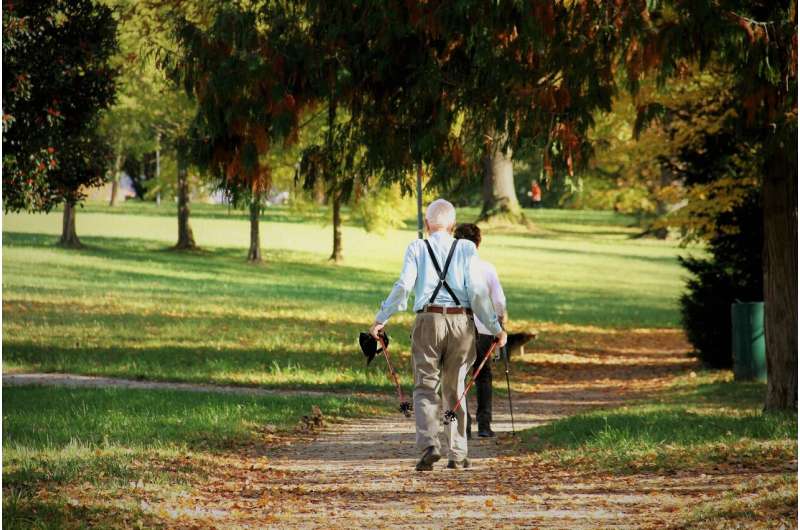This article has been reviewed according to Science X's editorial process and policies. Editors have highlighted the following attributes while ensuring the content's credibility:
fact-checked
trusted source
proofread
Researchers call for enhanced research into common post-stroke condition

Lateropulsion, a clinical condition that results in the body leaning to one side, affects about half of all stroke survivors.
Edith Cowan University (ECU) Ph.D. graduate Dr. Jessica Nolan said while the problem is common, lateropulsion is still severely under recognized and under assessed around the world.
"A person with lateropulsion uses the limbs on their stronger side, to push themselves over toward their weaker side. Often those with lateropulsion resist correction back towards their stronger side or the mid-line, and this can cause problems with sitting, standing, walking and looking after themselves. It is also associated with a higher risk of falling, reduced recovery and a reduced likelihood of discharge after in-patient rehabilitation," Dr. Nolan said.
"The treatment of lateropulsion in stroke survivors is a critical aspect of rehabilitation; however, the issue requires better understanding and more research."
It is estimated that in 2020, there were some 39,500 stroke events in Australia, averaging more than 100 a day. In that same year, it was estimated that more than 445,087 Australians were living with the side effects of stroke. Stroke is one of Australia's biggest killers, with the event killing more women than breast cancer and more men than prostate cancer.
Despite the prevalence of lateropulsion following a stroke event, a lack of agreement on terminology and the defining features of the condition present obstacles to understanding its prevalence, accurately comparing research results, and agreeing on a consistent approach to rehabilitation.
"People affected after a stroke may be at a disadvantage, because of the inconsistent approaches to rehabilitation and the failure of health policy to accommodate their rehabilitation needs," Dr. Nolan said.
"Improved understanding of the condition could lead to improved management, which will enhance patient outcomes after stroke and increase efficiency of health care resource use."
Dr. Nolan has previously led a Delphi consensus process, partnering with 21 international experts to reach a consensus on the terminology used to describe the condition and on the rehabilitation requirements for people living with severe lateropulsion, as well as recommendations for rehabilitation.
While a consensus regarding terminology was not reached, the panel achieved some agreement that lateropulsion was the preferred term to describe the phenomenon. More than 100 consensus-based recommendations were also provided to guide rehabilitation of lateropulsion.
In her latest research, Dr. Nolan found that lateropulsion could continue to resolve up to one-year post-stroke, far beyond the period of in-patient rehabilitation. Average in-patient length of stay following a stroke varies, but for those patients presenting with lateropulsion, in-patient stay was about three to four weeks longer compared to those without. The research is published in the journal Topics in Stroke Rehabilitation.
"This study was the first to investigate functional recovery up to 12 months post-stroke, and to compare outcomes among people with and without lateropulsion. This study supports findings from previous work that lateropulsion severity was a predictor of long-term functional outcomes."
"Lateropulsion after stroke can resolve, but it is dependent on access to ongoing rehabilitation.
"People who do not have access to long-term rehabilitation following a stroke did not show the same extent of lateropulsion resolution or functional recovery."
More information: Jessica Nolan et al, Lateropulsion resolution and outcomes up to one year post-stroke: a prospective, longitudinal cohort study, Topics in Stroke Rehabilitation (2024). DOI: 10.1080/10749357.2024.2333186



















